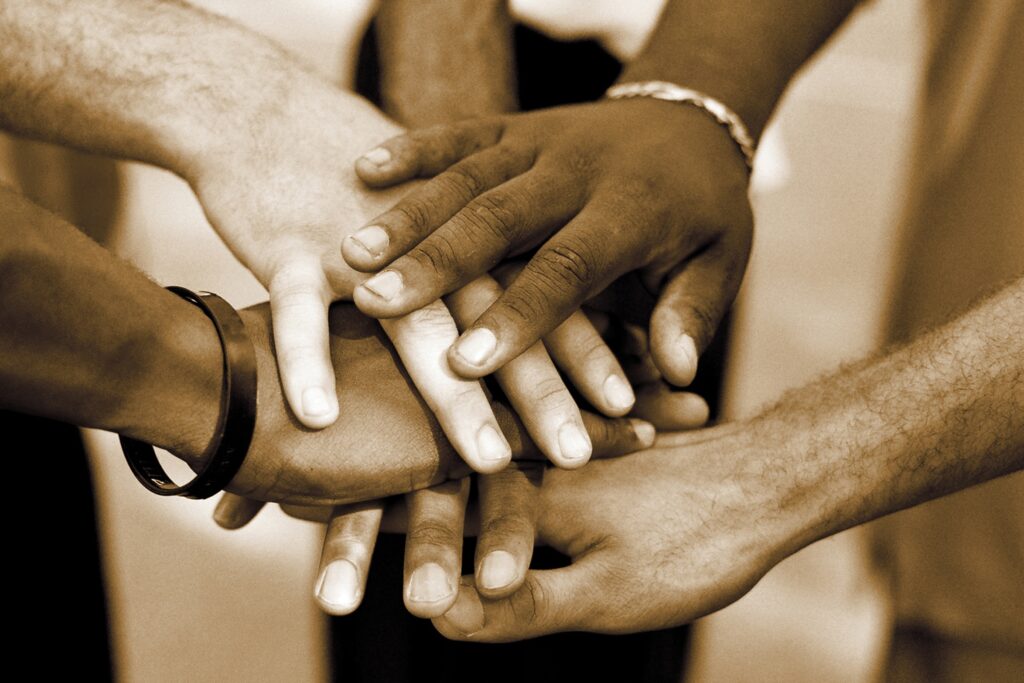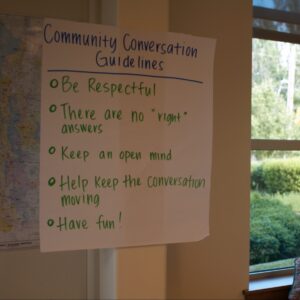
How is inclusion practiced?
I came across this wonderful article recently, “All Voices on Deck: How Inclusiveness Can Help Define Your Leadership Style” by Rebecca Shambaugh. I highly suggest every person read it. Especially those who want to be leaders practicing inclusion.
Inclusion has been on my mind a lot lately (hiring processes will do that). It’s easy to think as non-profits that we’ve got this covered. And of course, we all use the words equity and inclusion so often that, why wouldn’t we? But these words are such a totem in our industry. I wonder what we miss by throwing them around so casually. The Shambaugh article isn’t written for non-profits but applies all the same – if not more since our work is in the name of social good.
Inclusion Confusion
From my experiences talking with many other non-profit professionals, our

Turns out inclusion is a lot like a community conversation…just everyday.
industry is pretty good at giving clinical definitions of equity and understands inclusion as a way to practice equity. But what does inclusion really look like? How do we practice it? Does it exist in both our programming and our organizations? When asking these questions, I’ve found it much harder to get a clear and tangible answer.
Recently asked what equity and inclusion means to me, I gave the same canned and romantic response I often hear from colleagues. I talked about bringing people to the table and said something about my shoes not fitting all feet. This re-played in my head for the next few days until I realized what was off about my answer. It was a regurgitation of definitions that didn’t speak to mindfulness or action. Many of us solidly understand the concepts and it certainly isn’t hard to intend to be inclusive. It does, however, take action and commitment to actually practice them.
When asked again, this is how I will answer:
Equity must go beyond intent (although intent should be examined– doing this work out of privileged guilt makes it about you and not equity). It is not enough to be intentional. True equity requires us to engage in constant awareness, have humbling conversations, and most of all – create transparency in our actions. It is a constant cycle of listening, adjusting, and recognizing patterns of behavior and history.
But at any given moment, it should be easy to point to concrete actions – as a person or an organization. We are all, each and every human being, responsible for doing this. And this should be the ultimate requirement we have for our leaders. One of my concrete actions is my commitment to asking for and giving honest feedback – especially the hard kind that digs at my ego.
Taking actions
The article linked above outlines 10 solid actions for leaders to take. Shambaugh includes actions to increase equity across race, gender, cognitive styles and more.
If you prefer listening or watching to reading, try Chimamanda Adichie’s TEDTalk – The Danger of a Single Story. Another great resource that goes hand in hand with the Shambaugh article.
-Allison Mountjoy

